Amrish Puri to Amol Palekar, This Genius Inspired Loyalty From India’s Greatest Actors
"A lot of actors may or may not acknowledge it, but deep down each one of them knows how much Satyadev Dubey Ji's words mattered." #Theatre #Cinema
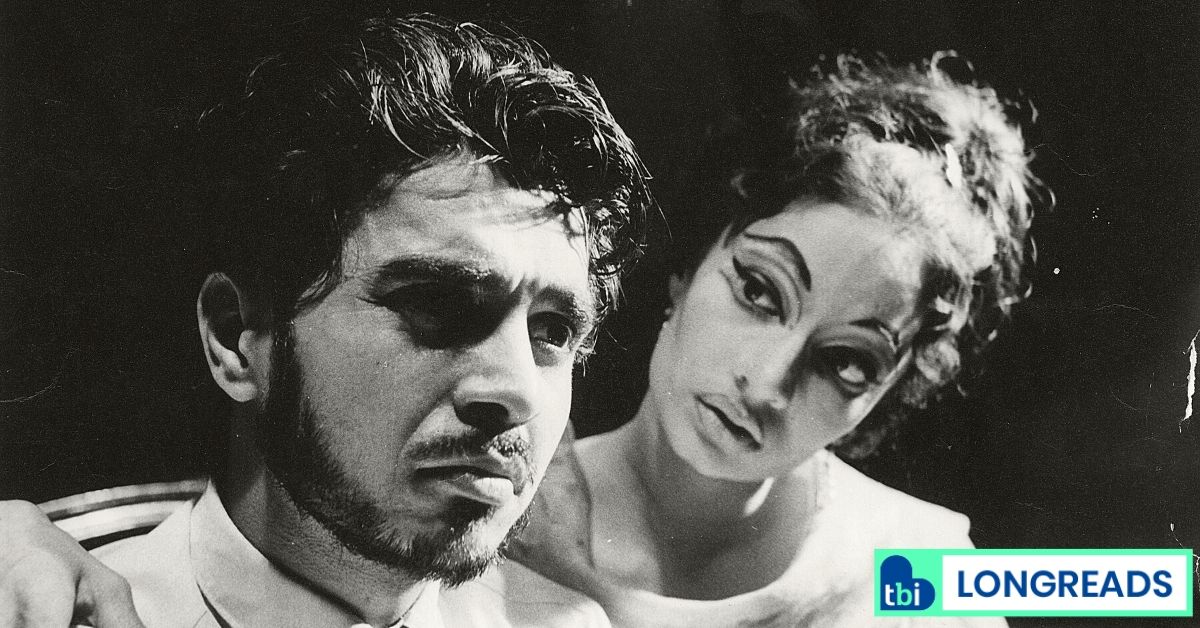
In all honesty, the first time I had ever heard of legendary playwright, director and producer Satyadev Dubey was not through one of his plays, but an interview veteran filmmaker Shyam Benegal gave to Cinestaan in June 2017. Funnily enough, the interview wasn’t even about Dubey, but the actor Amrish Puri and how he used the money earned from commercial films to fund standout theatre groups like the Mumbai-based Theatre Unit.
“He [Amrish Puri] had become a popular star and villain in commercial films. This is where the money came from. But he helped a lot of people with that money. He kept the poor Theatre Unit going. When Satyadev Dubey would do a play, the production was paid for by Amrish. Nobody knew that was happening,” said Shyam Benegal.
Reading this quote, I thought to myself ‘who is this Satyadev Dubey’? Why would one of the all time great actors take the trouble of paying for this man’s production? What was it about Satyadev Dubey that elicited such kindness and loyalty from one of the all time great actors? What ensued was a frantic Google search about this unique personality. I found hundreds of tributes, remembrances, anecdotes and even an obituary in The New York Times dedicated to Satyadev Dubey, who was fondly known as ‘Dubey Ji’ to many.
A simple Google Search opened my eyes to a figure, who trained and inspired generations of Indian actors including Amrish Puri, Amol Palekar, Nasseeruddin Shah, Ratna Pathak Shah, Govind Nihalani, Sulabha Deshpande, Mohan Bhandari, Harish Patel, Sonali Kulkarni and even Akshaye Khanna before he began acting in films. He also inspired and continues to inspire generations of playwrights, directors and producers.
Born into an upper-caste family in Bilaspur on 13 July, 1936, Dubey had aspirations of becoming a cricket player while studying at a Mumbai college in the early 1950s. All that changed when he was introduced to theatre and began acting in Theatre Unit, a Mumbai troupe run by director Ebrahim Alkazi.
When Alkazi left to take over the National School of Drama in Delhi by the early 1960s, Dubey took over the reins and produced a series of plays including “Andha Yug”, an anti-war Hindi play written by Dharamvir Bharati and “Yayati”, a Kannada play written by Girish Karnad which was translated into Hindi with Amrish Puri in a lead role.
These plays would go on to change the landscape of modern theatre in India.
As the man responsible for reviving and modernising Hindi theatre through the 1960s and 1970s, he was a key actor in creating a pan-Indian theatre consciousness by producing plays translated from different Indian languages like Gujarati, Kannada, Bengali and Marathi. He was a man ruthlessly brilliant in his commitment to theatre.
But there were two things I still wanted to know about Dubey Ji. Was Shyam Benegal’s anecdote about Amrish Puri and Dubey Ji true? Also, what was it about Dubey Ji that elicited such kindness and loyalty? In my search for persons who could offer me an insight into the man’s life, I found his grandson Satyajeet Dubey, an actor, on Instagram.
Sending him a direct message on Instagram, I asked him whether Shyam Benegal’s assertions about his grandfather were true. After waiting for over a day, he responded in the affirmative, but added that he didn’t know much about the entire affair. Instead he pointed me towards one of Dubey Ji’s students and acclaimed theatre actor Hidayat Sami.
Besides offering me some unique insights into how Dubey Ji trained his actors, Sami didn’t really have in-depth answers to my questions about the Amrish Puri anecdote. He said that this had happened well before his time on stage and association with Dubey Ji.
Instead, he was kind enough to get me in touch with two people who shared a very close relationship with Dubey Ji—legendary theatre director, thespian and protege Sunil Shanbag and Lata Sharma, an actor and a close confidant.
Speaking to both of them, it’s evident that Dubey Ji left an indelible impression on so many lives. Maybe this is how he inspired such loyalty from the likes of Amrish Puri.
“Even when Puri Saab wasn’t a very successful film actor, his deep sense of loyalty to Dubey was always there. He always supported Dubey regardless of whether it was with money or any other way. Whenever Puri Saab had time, he would personally come for a performance, sit backstage with us and meet us after the show. His loyalty and support went much beyond just the financial assistance he would offer every now and then,” says Sunil Shanbag, in an exclusive conversation with The Better India.
“There are three generations of actors who have trained under him. Many of them have gone on to become successful actors. Once again, it depends on how you define success. Some have successfully transitioned into mainstream cinema, while others continue to perform on stage till this day and are doing very well because of their skill and craft,” he adds.
But what was it about Dubey Ji that elicited such love, respect and loyalty?
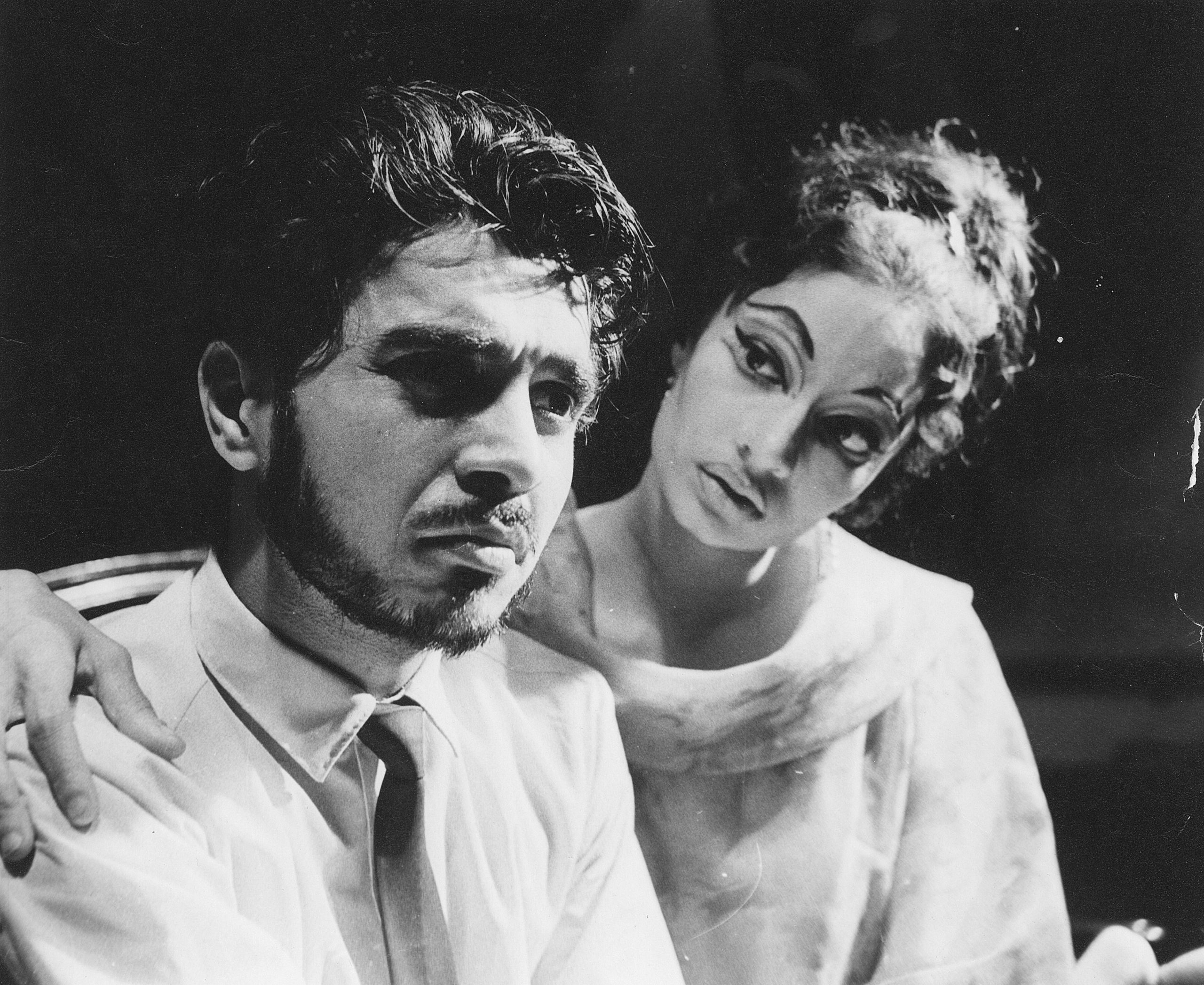
Satyadev Dubey, the man
“Dubey was a total maverick with amazing foresight who was way ahead of his time,” recalls Lata Sharma with a tone of nostalgia emanating from her voice. “Although he had a very short temper which mellowed with age, he was a father figure to all of us.”
If he saw potential in anyone, which they may not have recognized it themselves, he went all out to ensure that they made the most of their inherent skills. He was usually bang on about identifying that potential and was willing to give his time, energy and patience, she recalls.
However, it’s his selflessness as a teacher which really stood out, according to Sharma. Since Dubey’s needs were so limited, there was never a commercial angle to any work he did. This was also reflected in his simple living situation. Sharma speaks of how he had just one mattress on the floor, a chair and a wall of books lining his room.
“It’s nearly impossible to keep track of the number of notable actors and actresses he taught. Dubey Ji held workshops for free distributing passages to anyone that walked in and asked them to memorize it. He would teach impromptu exercises to improve their speech, stance and posture. There were spaces like the Prithvi Theatre, which back in the 1970s was a lot quieter than it’s today. At a cafe there, he would host these workshops once a week. Nearly 25-30 people came there, consisting of struggling actors and actresses or people who just wanted a little more confidence to face situations in their professional lives,” she recalls.
Major actors, who had crossed over into mainstream cinema, would willingly offer their assistance, money or time to Dubey for his productions in whatever capacity. That also comes from the fact many of them are actors from the National School of Drama (NSD).
Every year for a number of years, he was invited by NSD to do a production with final year students. Casting them in his plays and seeing their potential, Dubey never failed in mentioning their names to his friends in the film industry. He would recommend their names to people in the industry or just state them in passing during a gathering of people who matter that they should watch for this young man or woman coming out of NSD.
“Many of these actors got their major break or a foot in the door while approaching filmmakers or production houses because of his recommendation. A lot of them may or may not acknowledge it, but deep down each one of them knows how much Dubey Ji’s words mattered. That is something which I think makes them grateful. If they remembered that, somewhere along the line they would have liked to repay him. But there was nothing material they could give him in return because his personal needs were minimal although he occasionally enjoyed his glass of Blue Label whiskey,” recalls Sharma.
Dubey’s purpose was always set towards furthering the gospel of theatre.
“Dubey Ji’s personality was such that whenever he needed help, he was never embarrassed to ask. And he always asked for help on his own terms. For example, if a performance was coming up and the advertising would cost Rs 15,000, he would ask you to pay the advertising company directly, and not deposit the money with him. You have a long list of people who have always stepped in to help pay for food during rehearsals or donate cushions, toys or other household items for the set because he had this uncanny ability to bring people together. I personally know Nasseruddin Shah always stepped in to help in any capacity whenever he was called upon. He touched people who worked with him in a way few can describe. Not many people would ever refuse to help him,” says Shanbag.
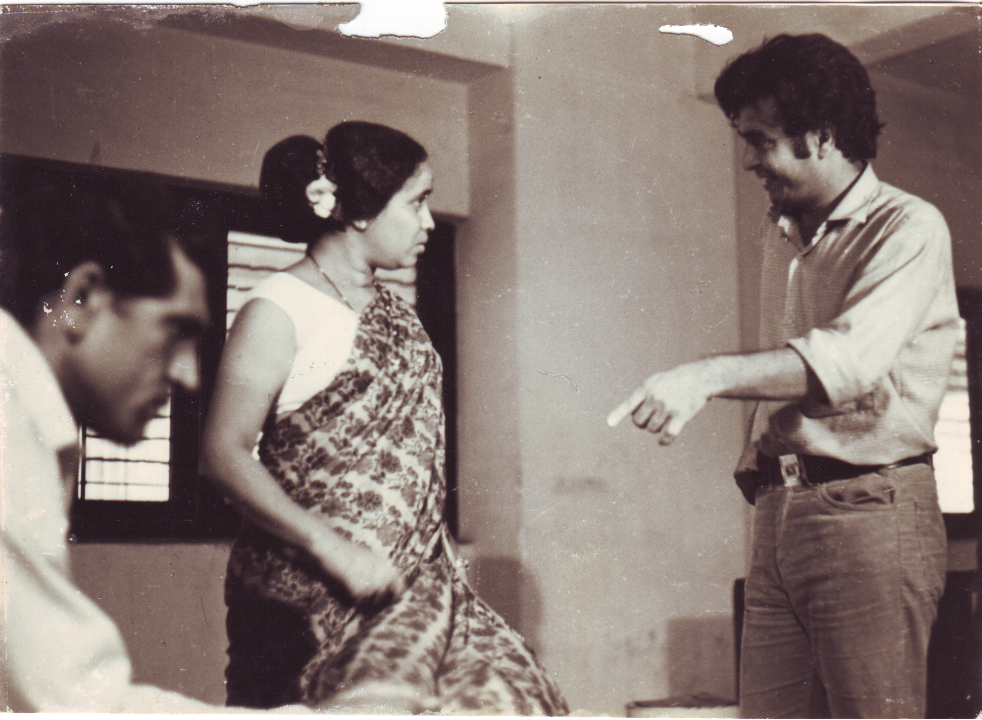
Dubey’s Gharana of Acting
At the heart of this gratitude that many of his students and contemporaries offered was his dedicated approach to his craft. His theatre centred around words and texts. What always fascinated him was the world of words and ideas. A lot of his training centred around these elements.
“As actors, we were trained very rigorously in the way we spoke the words and how we extracted meaning from them. That was the fundamental basis of his training and all the technical aspects that went into that. Besides, his was a very minimal sort of theatre. He didn’t depend too much on set design, lighting, costumes, etc. For him, the primary focus was the actor and the text and everything that went with these elements was at the core of his training. You would find that most of the young actors who trained under him articulate the text in a very particular way independent of the language,” says Shanbag.
There was a certain formality in the way his actors articulated their text. In fact, there was a criticism at one point that all Dubey-trained actors are the same. But that’s how the training was and it was a school of theatre in itself like a Gharana in classical Indian music.
“Dubey Ji also had an extremely sharp ear and a great sense of editing text. He was a master of choreography as a director. By choreography, I don’t mean movement or dance choreography, but the ability to move actors on stage to create a parallel narrative. His choreography added another layer to the text. Movements on stage in a Dubey production were never superfluous because they always added something to what the text was trying to say. He was a very demanding taskmaster. Everything was very rigorous with him. Nothing was done casually. Even conversations were intense and passionate with him,” he adds.
Since there was so much emphasis on actors, text and movement on stage, Dubey’s theatre was minimalistic in its own right as well. Most theatre functions under limited resources. Often, necessity becomes a virtue. You don’t have money for lighting, sets and costumes, but have actors and text, and they become the fundamental pillars of your work. Naturally, as a producer you concentrate on what’s available–actors and a script.
“See, the thing is his sets were never elaborate. He would sometimes get a friend or acquaintance looking to catch a break in the industry as a set designer to design it for him. To obtain funds that would help him execute the set design, he would write an ad, do a bit role in films, write a lot of dialogue and screenplays,” says Sharma.
Just so that we know, he won the 1978 National Film Award for Best Screenplay for Shyam Benegal’s ‘Bhumika’ and 1980 Filmfare Best Dialogue Award for ‘Junoon’.
“Dubey Ji never looked to earn money in the conventional sense. If he needed it, the money would come from a short gig he would take up or from somewhere else. Also, you have to note that the scale of theatre productions were much more modest back in the 1960s and 70s. Today, it’s very difficult for small groups to survive,” she recalls.
People are today making a living out of theatre, which wasn’t really the case 40 years ago. Dubey never looked at how he could recover the money on his production or how long it should run, etc. He would often say in these times ‘chalna hoga toh chalega’.
“In those days, smaller towns and cities invited a lot of theatre groups from Bombay. We got some money, but otherwise it was like a picnic and sometimes that money would be kept aside for the next production. Today, theatre productions begin with the budget, before one can even contemplate a reading of the play,” says Sharma.
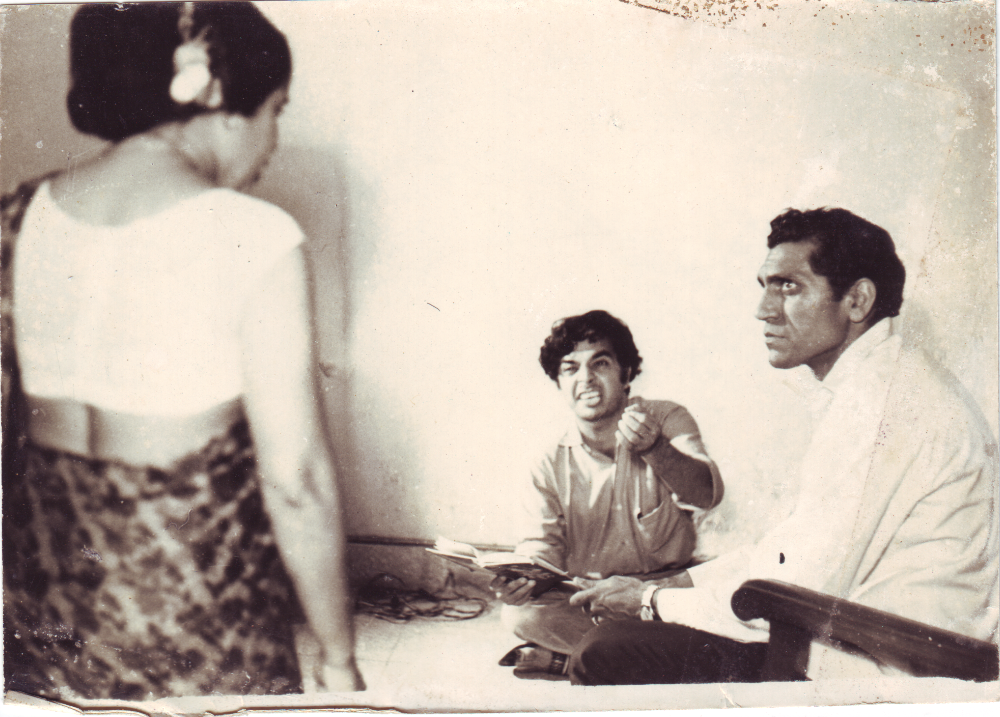
Pan-India Theatre
A great conversationalist, his acquaintances often say that he loved to get into discussions, enjoyed sharing his excitement of a piece of theatre he had seen or read, always dreamt up a new project or organised a reading of a new play someone wrote. He loved the energy of being with people. Invariably, he was the focal point of a lot of get-togethers.
Back in the 1970s, when film producer Vinod Doshi gave him the entire ground floor of Walchand Terrace in Tardeo for four years as a rehearsal space, it turned into a great meeting point for all the legends of theatre at that time.
At a time when communicating with people across cities wasn’t so easy, he would ask for scripts from Bengal, Delhi, Karnataka, would organise translation of these scripts often in Hindi and many of them would get produced on stage. In fact, he was one of the key persons in informing actors in Mumbai that they weren’t working in isolation, but were part of a contemporary and blossoming pan-India scene.
“Dubey Ji often travelled around different cities like Kolkata and Delhi and had friends there. In Kolkata, for example, he had friends like Shyamanand Jalan. In Delhi, he would meet Rajinder Paul. They would call him up and say ‘hey, we found this very interesting script by Badal Babu (Badal Sarkar) and you must read it’. Dubey Ji would invariably respond by asking for the script, get it translated, organise readings and made available to any director in Bombay interested in producing this play,” argues Shanbag.
What would have otherwise been restricted to Bengal now moves to another part of the country, available in translation (mostly Hindi) and directors from various parts of India produce it. These plays moved around India. This is before the days of easy phone calls, emails or any of it. It was indeed a laborious process.
Dubey Ji worked with plays from so many different languages translated in Hindi, of course, whether it’s from Europe, Bengal or Karnataka and produce them from Hindi adaptation of Albert Camus’s “Cross Purpose” and Jean-Paul Sartre’s “No Exit” to Girish Karnad’s “Hayavadana” and Vijay Tendulkar’s “Khamosh! Adalat Jaari Hai”.
There is no question he created this theatrical sensibility that went well beyond Mumbai.
Shanta Gokhale, a noted writer and theatre historian, who has also written a book documenting his outstanding work called ‘Satyadev Dubey: A Fifty-Year Journey Through Theatre’, best describes this particular aspect, when she writes,
“Satyadev Dubey made his theatre in Mumbai the crucible of a pan-Indian, pan-world theatre consciousness by producing plays translated from different Indian and European languages. This cross-pollination gave audiences the first glimmer of a larger Indian theatre sensibility. To date he is credited with directing and producing over a hundred theatre productions in Hindi, Marathi, Gujarati and English, many of which are considered landmarks in modern Indian theatre. The influence of his style of theatre can be found across the country.”
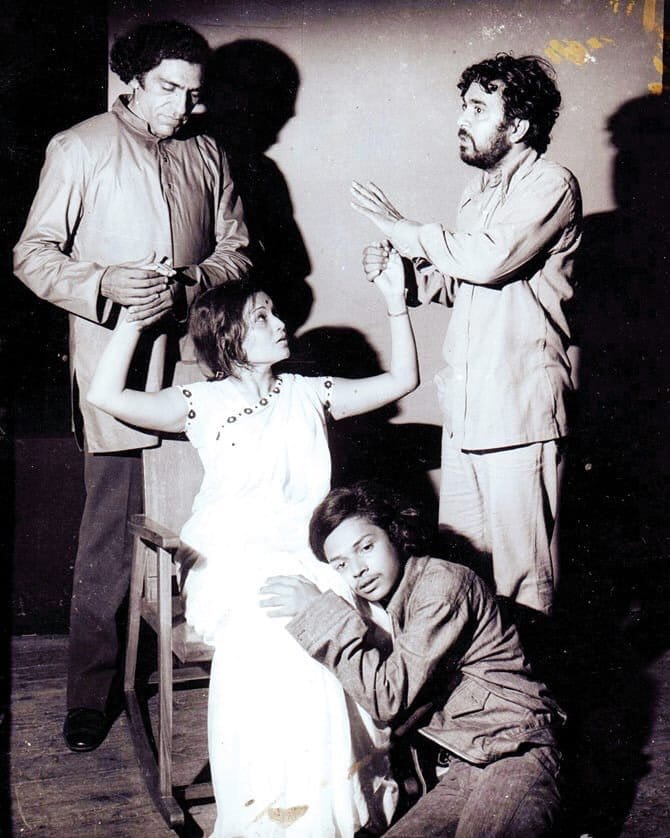
Legacy
He passed away on December 25, 2011 at the age of 75 in Mumbai, but it’s virtually impossible to encapsulate the legacy he leaves behind. He touched people’s hearts in so many different ways.
For Lata Sharma, who acted in only two of his plays but also took care of everything in his personal life from finances, health, and doctor visits, Dubey was a father figure.
“To someone else he was something else. He was a confidant, counsellor and so much more. And not everyone became actors out of their interactions with him, but they sure became better people. His influence went way beyond theatre. He was a friend, guide and mentor to lots of people who often gave sound advice on their regular lives. A man with a patient ear, Dubey Ji wasn’t judgmental and that’s what made him such a wonderful human being. I think those facets went along being a legendary theatre personality,” recalls Sharma.
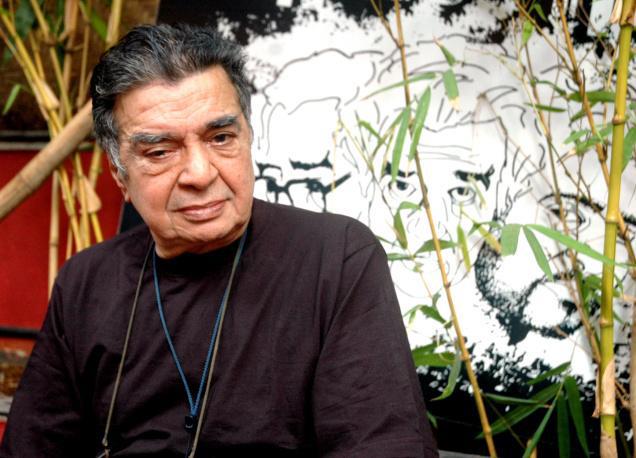
From not knowing anything at all about Satyadev Dubey, I had moved to a place where I sort of understood why many legendary actors held him in such high regard. There is a lot more to learn about Dubey Ji, and in all honesty, this is only the beginning.
(Edited by Vinayak Hegde)
Like this story? Or have something to share? Write to us: [email protected], or connect with us on Facebook and Twitter.
If you found our stories insightful, informative, or even just enjoyable, we invite you to consider making a voluntary payment to support the work we do at The Better India. Your contribution helps us continue producing quality content that educates, inspires, and drives positive change.
Choose one of the payment options below for your contribution-
By paying for the stories you value, you directly contribute to sustaining our efforts focused on making a difference in the world. Together, let’s ensure that impactful stories continue to be told and shared, enriching lives and communities alike.
Thank you for your support. Here are some frequently asked questions you might find helpful to know why you are contributing?


This story made me
-
97
-
121
-
89
-
167











